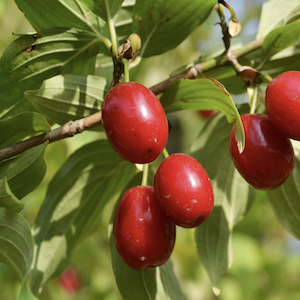Application of response surface methodology for optimisation of Cornelian cherry - Capia pepper leather dried in a heat pump drying system

Published:11 October 2023
Abstract Views: 727
PDF: 370
HTML: 15
HTML: 15
Publisher's note
All claims expressed in this article are solely those of the authors and do not necessarily represent those of their affiliated organizations, or those of the publisher, the editors and the reviewers. Any product that may be evaluated in this article or claim that may be made by its manufacturer is not guaranteed or endorsed by the publisher.
All claims expressed in this article are solely those of the authors and do not necessarily represent those of their affiliated organizations, or those of the publisher, the editors and the reviewers. Any product that may be evaluated in this article or claim that may be made by its manufacturer is not guaranteed or endorsed by the publisher.
Similar Articles
- Senanur Durgut Malçok, Azime Özkan Karabacak, Ertürk Bekar, Cüneyt Tunçkal, Canan Ece Tamer, Influence of a hybrid drying combined with infrared and heat pump dryer on drying characteristics, colour, thermal imaging and bioaccessibility of phenolics and antioxidant capacity of mushroom slices , Journal of Agricultural Engineering: Vol. 54 No. 3 (2023)
- Ernest Ekow Abano, Hai Le Ma, Wenjuan Qu, Thin-layer catalytic far-infrared radiation drying and flavour of tomato slices , Journal of Agricultural Engineering: Vol. 45 No. 1 (2014)
- Alexandros Sotirios Anifantis, Simone Pascuzzi, Giacomo Scarascia-Mugnozza, Geothermal source heat pump performance for a greenhouse heating system: an experimental study , Journal of Agricultural Engineering: Vol. 47 No. 3 (2016)
- Ernest Ekow Abano, Livingston Kobina Sam-Amoah, Ato Bart-Plange, Variation in ultrasonic frequency and time as pre-treatments to air-drying of carrot , Journal of Agricultural Engineering: Vol. 43 No. 4 (2012)
- Alessandro D'Emilio, Simona M.C. Porto, Giovanni Cascone, Marco Bella, Marco Gulino, Mitigating heat stress of dairy cows bred in a free-stall barn by sprinkler systems coupled with forced ventilation , Journal of Agricultural Engineering: Vol. 48 No. 4 (2017)
- Lucio Brunetti, Ferruccio Giametta, Pasquale Catalano, Francesco Villani, Jonathan Fioralba, Flavio Fucci, Giovanna La Fianza, Energy consumption and analysis of industrial drying plants for fresh pasta process , Journal of Agricultural Engineering: Vol. 46 No. 4 (2015)
- George Ashwehmbom Looh, Fangping Xie, Xiushan Wang, Augustine Ngiejungbwen Looh, Hamdaoui Hind, Grain kernel damage during threshing: a comprehensive review of theories and models , Journal of Agricultural Engineering: Vol. 56 No. 1 (2025)
- Lei Liu, Xianliang Wang, Xiaokang Zhong, Xiangcai Zhang, Yuanle Geng, Hua Zhou, Tao Chen, Design and experiment of furrow side pick-up soil blade for wheat strip-till planter using the discrete element method , Journal of Agricultural Engineering: Vol. 55 No. 1 (2024)
- Ileana Blanco, Simone Pascuzzi, Alexandros Sotirios Anifantis, Giacomo Scarascia-Mugnozza, Study of a pilot photovoltaic-electrolyser-fuel cell power system for a geothermal heat pump heated greenhouse and evaluation of the electrolyser efficiency and operational mode , Journal of Agricultural Engineering: Vol. 45 No. 3 (2014)
- Xingbo Hu, Tian Xia, Leidong Yang, Fangming Wu, Ying Fan, Yinghong Tian, 3D modeling and volume measurement of bulk grains stored in large warehouses using bi-temporal multi-site terrestrial laser scanning data , Journal of Agricultural Engineering: Vol. 55 No. 1 (2024)
You may also start an advanced similarity search for this article.

 https://doi.org/10.4081/jae.2023.1538
https://doi.org/10.4081/jae.2023.1538 











